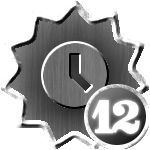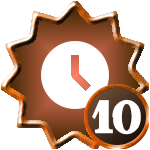-
Posts
291 -
Joined
-
Last visited
-
Days Won
1
OMWBWAY last won the day on July 4 2010
OMWBWAY had the most liked content!
About OMWBWAY

- Birthday 02/13/1986
Contact Methods
-
AIM
dclark9918
Profile Information
-
Biography
Constantly trying to write musicals. Constantly failing. I write music, lyrics and horrible stories.
-
Location
California
-
Occupation
I'm a semi-professional copyist, as well as writing/transposing/arranging all sorts of random things
-
Interests
I'm a performer, musically, and...dramatically?, but I love writing.
Recent Profile Visitors
The recent visitors block is disabled and is not being shown to other users.
OMWBWAY's Achievements
-
I am a mixture of all three methods you mentioned and more. Sometimes I will hear a feature instrument and think "oh, that's quirky/pretty/sad" and then I try to figure out what the rest of the orchestra is doing. Sometimes I'll hear the whole orchestra, like a movie score when I see something as I go about my day, and then I'll try to remember it and begin to capture it later. Sometimes, like one song I just finished a few days ago, I just have a chord progression in my head, then I figure out what instrument(s) is/are playing it, and how, and then I build the rest of the orchestra off of that instrument. There are times when I'll sit at a piano, messing around, and then I'll come up with an idea that I like, and then the rest of the day(s) will be me thinking and trying to develop that small idea into something larger.A lot of times, I'll hear something, but it'll be difficult for me to translate it, or single it out, and then write it down. This is where practice comes in. I think ComposerOrganist mentioned the pop music of the 70s or 60s having a lot more complex orchestrations to listen to than a lot of current music. I like this sort of stuff because it's not as complex as listening to full symphonies and trying to train your ear to pick out articulations in every single instrument, but it's still a nice challenge for practice. I especially LOVE The Carpenters. I have their gold anthology (40 songs) and it's odd to think that they become so popular considering all or most of their songs are actually arrangements of other popular songs. Almost nothing they had was original. Although Karen got most of the face time, Richard Carpenter was the source of all the instrumental accompaniment. He did all the arranging and orchestrations, and some of them are absolutely brilliant. They are definitely worth a listen, and a good source to start ear training to hear details, instead of jumping to Mahler or Dvorak, or Debussy or whoever else.
-
I'd love to see the description if you ever feel like typing it out. My roommates all play DnD. I tried it a few times, but I just can't get into it. But I definitely understand the gaming style. It'd be interesting to see how you interpreted each detail of the character in the "Scene".
-
You were right in your assessment. This very much reminded me of quake or Doom or any of those early FPS'. Also, maybe a little mortal kombat-ish as well. I could definitely hear "FINISH HIM!". Sounds great though.
-
Why would the orchestra hits not be available to Garritan? I use it, but I guess I've just never tried to write something with big orchestra hits.
-
This idea piques my interest, but I'm busy at that time on that day. I'd love to see the finished score though. I'm so curious now!
-

Need some advice
OMWBWAY replied to bedner1's topic in Incomplete Works; Writer's Block and Suggestions
This does have a very underwater feel. I'd love to see the score to the newest version. I wish it had a melodic line, or some sort of through-line that helped all of it flow(no pun intended) seamlessly. Right now, it seems like you have 1 idea that doesn't go anywhere, then you jump to another idea that doesn't go anywhere, then another, etc. What are the instruments? Vibes, harp, glock...and? I think the best thing for this right now would be to figure out how to smoothly connect all the different themes and ideas. All of them individually sound great, or as good as possible with the midi samples, but I can hear what they would be with real instruments. What are you going for with this? Just an orchestral piece? Mood music for a film or game? etc? -
If folks have suggestions, I'd love to be able to look up some example of these obscure intervals that people are mentioning. When you just play the interval on the piano, there is no difference between an augmented 2nd and a minor 3rd. Is there somewhere that I can hear it in context that suddenly makes it clearly an aug 2 instead of a min 3? Or is it dependent upon the scale only? Just curious.
-

GPO in Finale 2010
OMWBWAY replied to OMWBWAY's topic in Music Notation Software Help and Discussion
Awesome, thanks Jcramer....one other question, is it possible to do this in the setup wizard, so the document is created correctly from the get go? Or perhaps a way to save the instrumentation to be selected from the "Custom Ensemble" List? -
OMWBWAY started following GPO in Finale 2010
-
So, in Finale '10, which comes default with Garritan Orchestra, I'm trying to figure out how to layer multiple samples into the same staff line. One of the features is that when you are assigning parts for your score, you have the option of selecting (for example) "Flute Solo", "Flute Player 1", "Player 2", or "Player 3". Flute Solo is the original recorded sample, and the 3 players are all derived from the solo sample, but they have been tweaked so that if you have all 4 samples on different staves play a unison note, the slight adjustments in the tone and timbre of each sample makes it sound like there are 4 different flute players, to give the more realistic effect of a full orchestra, as opposed to the unison pitches for multiple staves of the same instrument turning into a singular flute sound, as if there is only one flute playing. My issue is in the score and playback. I'm trying to get this effect of multiple players for playback reasons, but I don't want to have to create 2-3 different flute staves to get this effect. And the problem is the same for 2-3 clarinets, 2 oboes, 2 bassoons, etc etc down the line. I could get the sound I want if I created a score with 30 staves. But that would take up a ridiculous amount of space and power, and take forever to load every time I opened it. My question is, is it possible to assign multiple samples to one staff, or perhaps assign different samples to different layers on the same staff, to get the effect of multiple players even in unison passages, so in playback, i still get the sound of a full orchestra? Thanks in advance if anyone can help. Much appreciated.
-
I view cut time as a warning to the musician that all notes are only worth half the value as they appear. When you see a quarter, it becomes an eight, etc. It just helps to simplify the reading. If I wrote a 32nd note passage in 1 measure, it would be difficult to read, because there would be so many notes in one measure. If I, instead, wrote 16th notes in 2 measures of cut time, it would be far easier to read and much less confusing.
-
In William Walton's "Belshazzar's Feast"....the Baritone soloist's narrative tells of King Belshazzar's feast coming to a close, but in a quiet, eerie, minimalistic way. At the end of an a capella phrase, he's echoed by the choir.....shouting. "In that night was Belshazzar the King.....slain" "SLAIN!" Also, in the same piece, there are about 8 final chords. Also ridiculous.
-
Having now listened. This is a lovely piece of music. Very pleasant to listen to. Here are a few parts I especially enjoyed: 112-115. Love that passage with the flute and piano in harmony. It was just very well placed in the context of the music in my opinion. m.8-9. I love the piano "twinkling" underneath the sustained flute. I wish it had happened more or at least once more at the end when the original theme returned. Alas, it never did. Your call, I was just hoping it would happen again cause I wanted to hear it again. In other thoughts, mm 19-36 felt ploddy to me. I don't know if this was purposeful, but it just seemed like such a long period of the same thing in the accompaniment and I was wondering when the next section would come just to hear something different. I even considered fast forwarding and had the piece been longer overall, I would have more than likely skipped to the next musical idea. Just my opinion. It seems like you have put a lot of thought into a seamless flute part, and it sounds that way. You may want to look into adding breath marks, so a performer would break the lines exactly where you want. In these long phrases at such slow tempos and in the lower register of the instrument, several breaths would be necessary and you haven't given any rests in some places, for example 114-135 you have no rests marked. I understand that sometimes the legato phrase markings can infer where the breath could fit nicely, but in listening to this, there are obvious places where you wouldn't want a breath, even though the phrase mark stops and begins again. I know sometimes this is forgotten because the flute sample (which sounds great btw, what library do you use (both the flute and piano sound really nice(even if the articulations aren't the best)) can play on forever without any break and in playback, it's a finished piece that is perfectly rendered, more or less. Anywho, I love this, it's very pleasant to listen to...so much so that I wish there was a way to put it on my itunes. I could sleep to this! Haha :lol: Great job. Can't wait to hear more.
-
How funny, I started writing a suite on this same topic for reduced orchestra about 2 years ago. It's sitting in a folder, untouched. I'm curious to see how you'll capture each muse. Perhaps I'll be inspired to pull my work out and dust it off. Can't wait to hear!
-

How Did You Learn/How Would You Teach the Concept of METER?
OMWBWAY replied to Salemosophy's topic in Advice and Techniques
My first piano teacher (who taught me more theory than piano) taught me in a way that still makes sense to me today, though I no longer need primitive methods over 15 years later. She showed me how I could find my pulse by putting two fingers into the side of my neck, right next to my windpipe, the same as you learn in a cpr course or health class. At 8 years old, this was brand new to me, so when I could feel my pulse, it was exciting. Then, with my other hand, she had me tap on the piano every time my heart beat. Then she had me count out loud. Random numbers: 4, 1, 7, 16....and she instructed me that when I got to the final number, start back at 1. Then she had me do it without feeling my pulse. And voila, I was counting in odd and complex meters (along with the "simple" ones) without even realizing it. She then showed me what those counts looked like on paper. A barline, quarter notes, then another barline with a colon in front of it, which i later found out was a repeat sign. So i counted to 4, 7, 12 and then started back from one. Etc etc etc so on and so forth. This was day 2 of my piano lessons. She also taught me tempo by timing my pulse to a metronome. First resting.....then i got up and did 10 jumping jacks and checked again. And we timed how many beats were in a minute. She said music was related to medicine this way, that BPM was beats per minute for your heart rate, or your song speed. Etc etc. Looking back, She was a great teacher. Only went to her 3 more times cause she kept canceling lessons and then she just disappeared. -
If this is still needed, I would ask what percussion instruments you are having the percussionists play. Depending on the time and spacing, it may be possible to have a percussion part 1 and 2, where percussionist 1 only plays (triangle, tambourine, and sleigh bells) for example. So from there you can structure the Percussion 1 part to those specific instruments, and then the rest to percussion 2.



